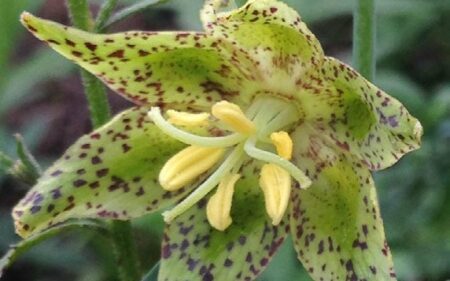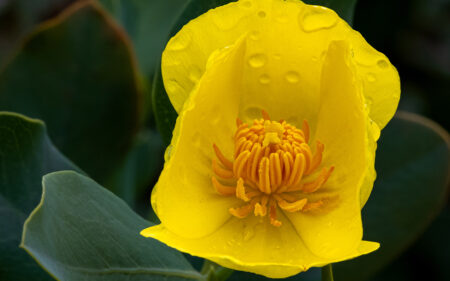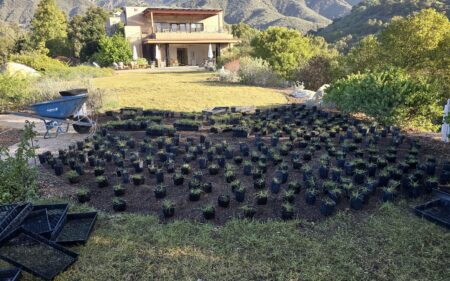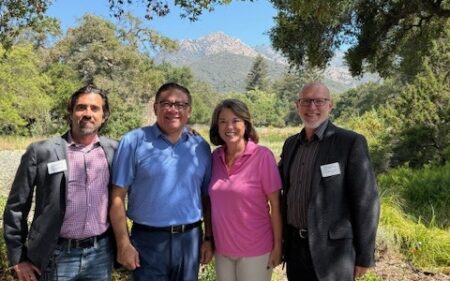Starting Your California-Native Lawn
Lawns are an integral part of the landscape at Santa Barbara Botanic Garden. They are a place where we host public and staff gatherings, educational classes, and personal milestone events throughout the year. Here at the Garden, we display California’s native grasses that succeed in both meadow and lawn settings. They require less water than nonnative grasses while still being attractive and providing functional open green space. We frequently hear questions from guests wanting to establish and care for a California-native lawn, so I’m here to share some how-to advice, along with other resources for further research and education.
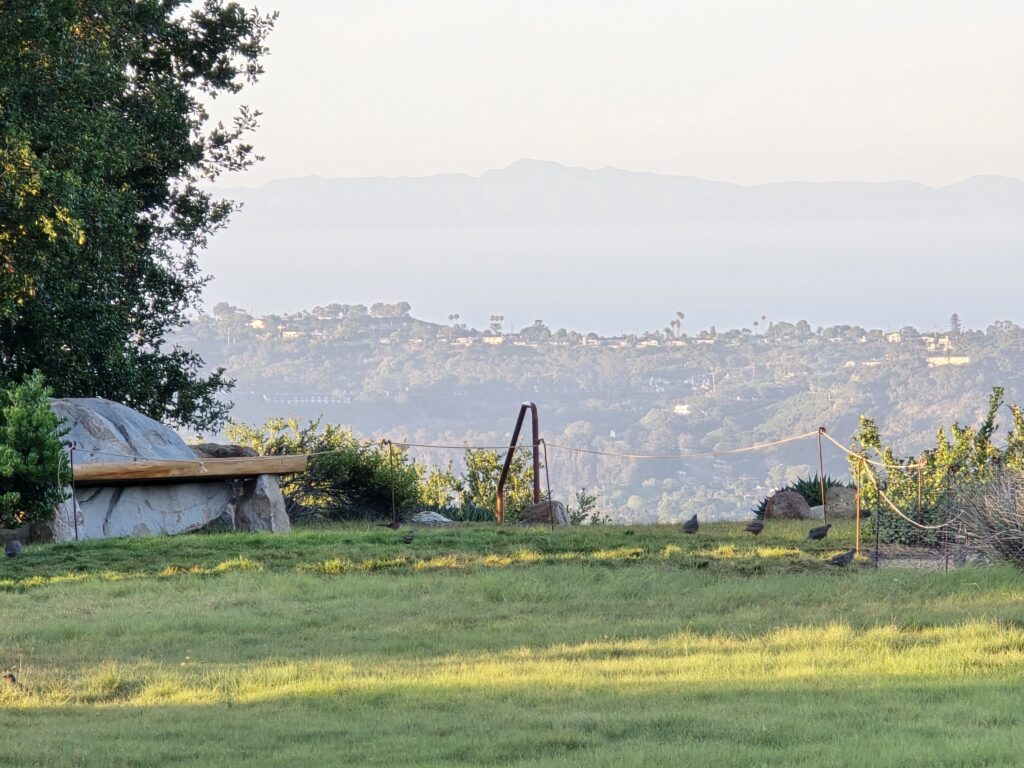
First, Do You Really Want a Lawn?
Before getting into how to install, grow, and maintain a lawn, there are some other factors to consider. Yes, lawns can be fun for gatherings and specific uses, but require maintenance – mowing, weeding, watering – to keep them healthy and attractive. First, think about whether a lawn is really needed at all. Important questions such as: How much would I really use it? What will be the primary use? Can I maintain it regularly? And what size does it need to be for the uses I’m considering? Personally, I really enjoy creating a space that supports a variety of wildlife. To do this, I maintain my yard with a perennial garden of diverse native plants that provide seed, nectar, forage, homemaking materials, and cover. I also like to keep various dishes of water available to provide resources for wildlife.
A lawn, even a native lawn, does not provide these important habitat values to wildlife, so it’s something to think about when deciding how important a lawn is in your landscape. Perhaps one is not needed at all. Maybe a wavy meadow with grasses and herbaceous perennials, such as yarrow (Achillea millefolium) and goldenrod (Solidago velutina ssp. californica), or a yard with blooming perennials and shrubs might be better for the space? Low groundcovers are another alternative to consider. Lippia (Phyla nodiflora) is a great low-water, easy-to-grow native groundcover for sunny conditions that also provides a pretty, white/pink bloom that bees enjoy.
If a lawn is still the right choice for your needs, let’s start by gathering some important information regarding your site.
What Are Your Site Conditions?
Sun exposure
- Starting with how much sun the lawn gets is critical. Is your lawn site in full sun all day, part of the day, or mostly shade? Different species will succeed better in different exposures. For coastal southern and central California, here are some examples of successful lawn species:
- For full-day sun, blue grama (Bouteloua gracilis) is a favorite, as it is easy to grow, tolerates foot traffic well, is drought-tolerant, and is typically easily available to purchase.
- Another good selection is bentgrass (Agrostis pallens) as it can tolerate moderate foot traffic, can be mown, provides a fine-textured grass appearance, and, like all other selections presented here, requires less water than traditional lawns.
- For sites with part sun and part shade, clustered field sedge (Carex praegracilis) or rusty slender sedge (Carex subfusca) will create a green meadow or lawn all year long and will tolerate the reduced sun exposure. Carex can tolerate moderate to heavy foot traffic, spreads easily providing dense coverage, can be mown regularly, and is very easy to grow.
- For mostly shady areas, fescues (Festuca sp.) are useful. Festuca rubra, Festuca occidentalis, and Festuca idahoensis are a few that are available. Festucas are also low water use compared to traditional lawns, but will require slightly more irrigation than other species listed here. They have less tolerance to heavy foot traffic, but have a lovely fine textured appearance, can be mown or left to grow longer, and are fairly easy to grow if the correct species is chosen for the site.
An example of a Bouteloua lawn and a Carex lawn are demonstrated at the Pritzlaff Conservation Center (PCC), and a mix of Festuca is demonstrated on the north side of the Home Demonstration Garden Section on the Garden’s west side.
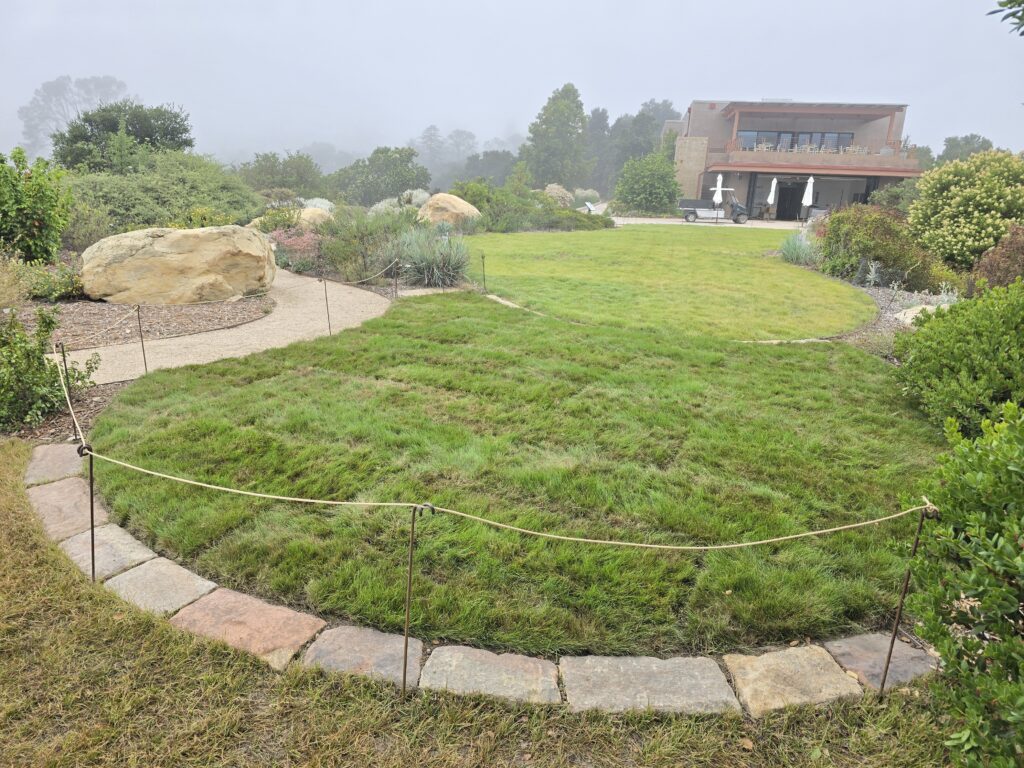
Location & Seasonality
In addition to evaluating sun exposure, consider whether your location is coastal or inland, as that can affect temperature extremes in both summer and winter, which will govern which species perform better as a lawn.
You’ll also want to consider whether you would like a warm-season or cool-season lawn, meaning the time of year the grasses are most actively growing. Warm-season lawns will be greener and actively growing in the summer months, while cool-season lawns grow more actively and stay greener in winter. Bouteloua is an example of a warm-season grass, while Festuca and Agrostis are cool-season growers. Carex (which is a sedge rather than grass) is also a cool-season genus in most cases. Both can succeed; it just depends on the needs of the site.
Soil Evaluation
After exploring your site and making some determinations, a good next step is investigating the composition of your soil. What is the soil like: is it dense clay, sandy, or rocky? Is it light and full of organic material? Few of us have “perfect” soil, but there are a few things a lawn will need. Ideally, the soil would have a balance of sand and loam that would deliver some nutrients to the lawn, while also allowing for water drainage and permeability for roots to grow healthy.
Native California lawns do not need much additional fertilization if the soil has some organic material, such as good compost mixed in, though occasionally a light organic fertilizer can add nutrients into the lawn or soil if deficiencies occur. Before installing a new lawn, consider a soil test, which can offer insight into nutrient and organic contents, texture, and any soil deficiencies. Often, topsoil and compost may need to be purchased and added to existing native soil to successfully create ideal conditions.
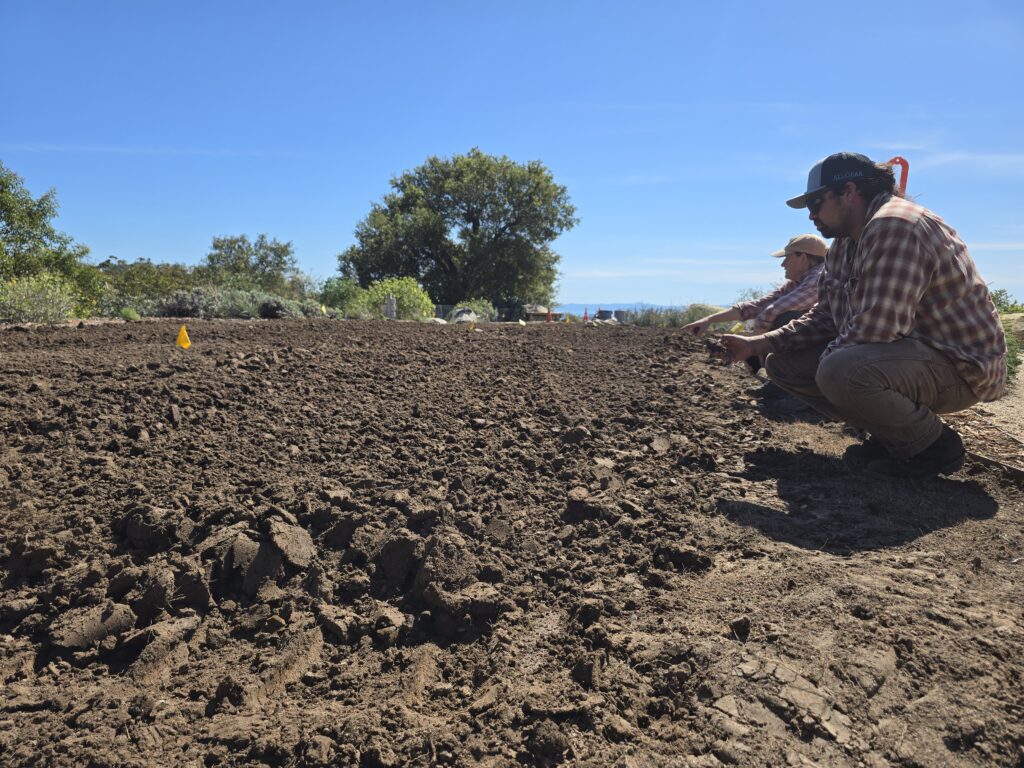
Irrigation
After you’ve evaluated your site and soil composition, the next step to think about is irrigation. A lawn will need regular irrigation to keep it healthy, especially in Southern California. Irrigation can be accomplished by hand watering or an overhead irrigation system. Watering by hand is time-consuming but inexpensive, while an established overhead irrigation system is more reliable and saves time, but can be quite expensive to install and maintain.
Availability of Lawn Material
Depending on your location, it may be easier to purchase seed, rolls of sod, or plugs to install a lawn. For instance, Bouteloua is easy to establish by seed, whereas Carex is often best established by plugs. When deciding upon a lawn, consider where you’ll source seed, plugs, or rolled sod. For the Santa Barbara area, to name a few sources, seed can be purchased from Pacific Coast Seed, formerly S&S Seed, plugs from Grassland Growers, and sod from Delta Bluegrass Company in Stockton. Contacting the supplier directly will be the best way to find out what kind of plant material you can access, and the respective pricing.
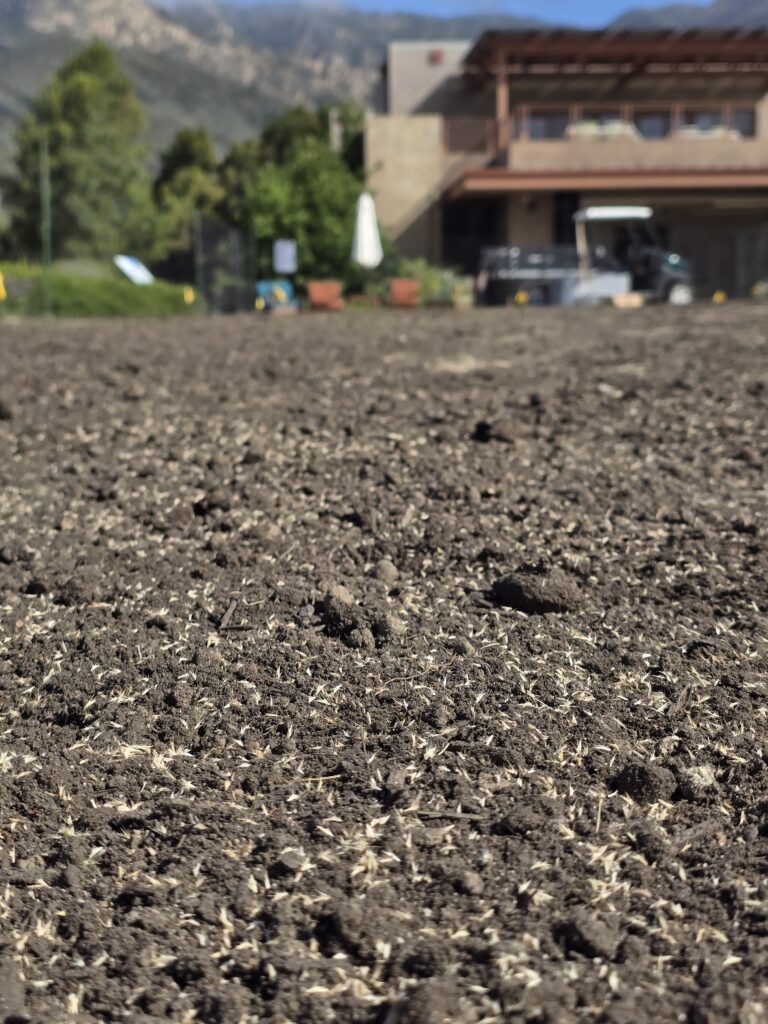
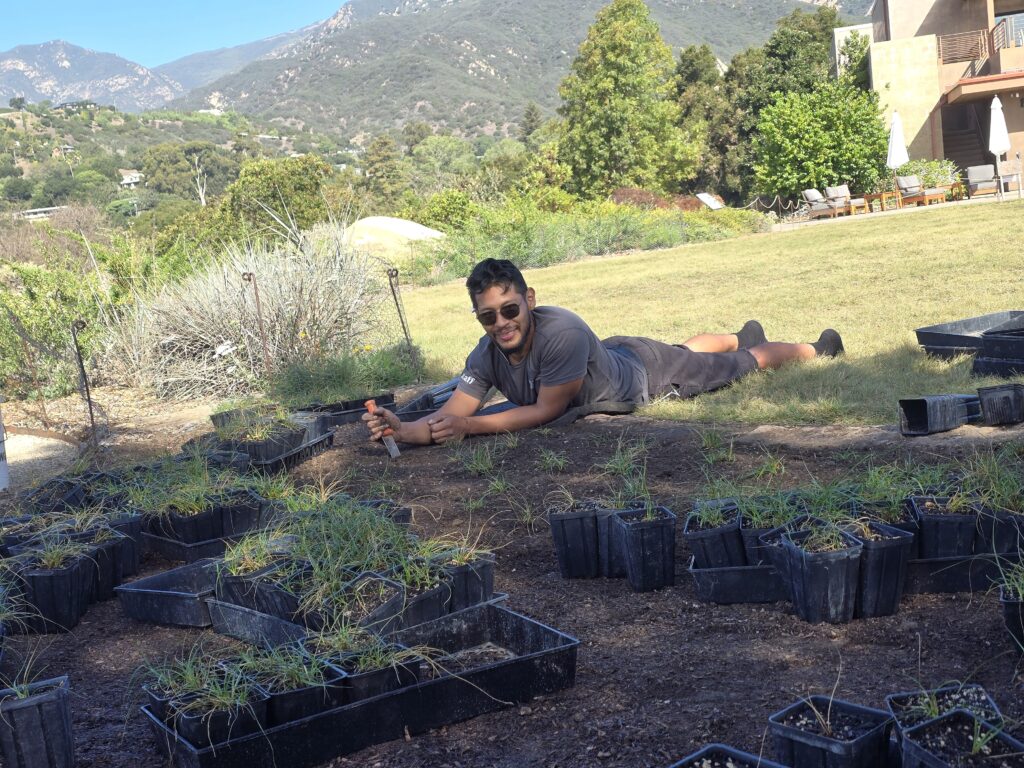
 Donate
Donate